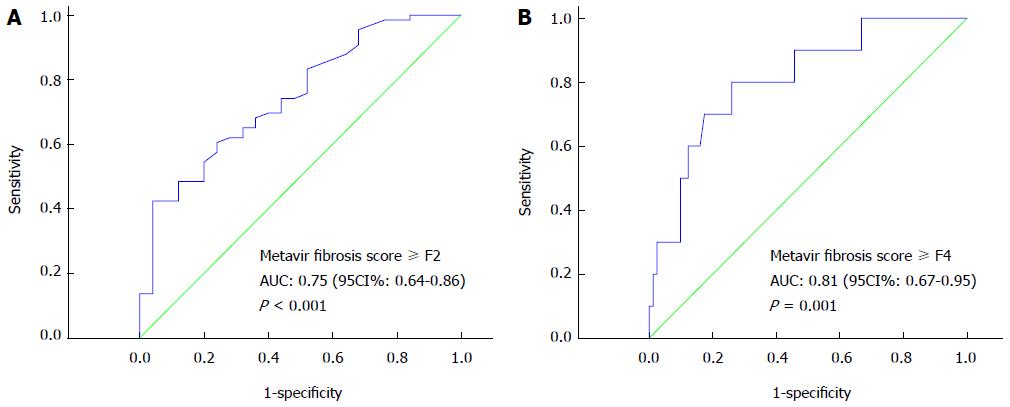Copyright
©The Author(s) 2015.
World J Gastroenterol. May 21, 2015; 21(19): 5893-5900
Published online May 21, 2015. doi: 10.3748/wjg.v21.i19.5893
Published online May 21, 2015. doi: 10.3748/wjg.v21.i19.5893
Figure 2 Receiver-operating characteristics curve for aminotransferase to platelet ratio index in the diagnosis of significant liver fibrosis or cirrhosis in biliary atresia.
A: Receiver-operating characteristics (ROC) curve of F0-F1 vs F2-F4. The area under the ROC curve (AUC) of APRI for diagnosing significant fibrosis (≥ F2) was 0.75 (95%CI: 0.64-0.86, P < 0.001); B: ROC curve of F0-F3 vs F4. The area under the ROC curve (AUC) of APRI for diagnosing liver cirrhosis (= F4) was 0.81 (95%CI: 0.67-0.96, P = 0.001).
- Citation: Yang LY, Fu J, Peng XF, Pang SY, Gao KK, Chen ZR, He LJ, Wen Z, Wang H, Li L, Wang FH, Yu JK, Xu Y, Gong ST, Xia HM, Liu HY. Validation of aspartate aminotransferase to platelet ratio for diagnosis of liver fibrosis and prediction of postoperative prognosis in infants with biliary atresia. World J Gastroenterol 2015; 21(19): 5893-5900
- URL: https://www.wjgnet.com/1007-9327/full/v21/i19/5893.htm
- DOI: https://dx.doi.org/10.3748/wjg.v21.i19.5893









